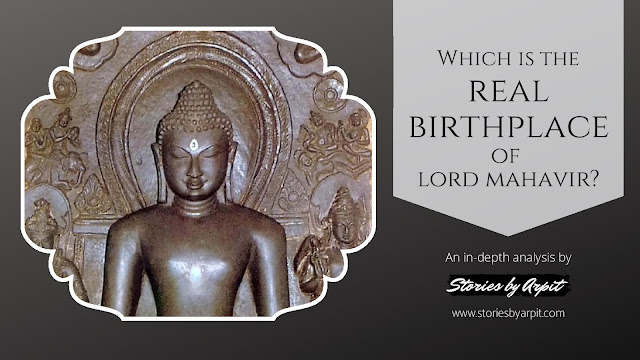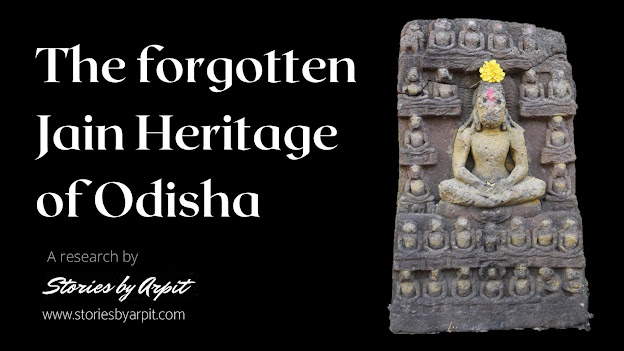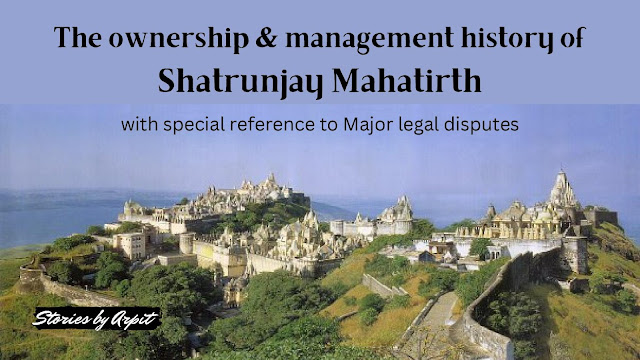The Jain Ramayan – The life of Shri Ram, through the Jain lens
 |
The ancient epic Ramayan is well-known among most Indians and devotees around the world, with various versions narrating the story of Shri Ram, the prince of Ayodhya. These versions chronicle his fourteen-year exile to the forest, his travels across the wilderness with his wife Sita and brother Lakshman, the kidnapping of Sita by Ravan (the king of Lanka), leading to war, and Shri Ram's eventual return to Ayodhya with Sita for his coronation amid jubilation and celebration.
As the world gears up for the consecration of Shri Ram Janmabhoomi Temple at Ayodhya on 22nd January 2024, it is crucial for Jains to recognize that Jain versions of the Ramayan have existed since antiquity. Equally important is the recognition of the sacredness of Ayodhya, as it has been the site for the occurrence of 19 Kalyanaks of Jain Tirthankars, including Chyawan, Janma, and Diksha of Shri Rishabhdev Bhagwan, as well as Chyawan, Janma, Diksha, and Kevalgyan of Shri Ajitnath Bhagwan, Shri Abhinandan Swami, Shri Sumtinath Bhagwan, and Shri Anantnath Bhagwan. This endows Ayodhya with profound religious significance for Jains.
Shri Ram, known as Padma in Jain scriptures, was one of the sixty-three illustrious persons, known as Shalakapurush. In Jain tradition, Shri Ram was the 8th Baldev (Balbhadra as per Digambars), Shri Lakshman was the 8th Vasudev (Narayan as per Digambars), and Ravan was the 8th Prati Vasudev of the present Avsarpini (time cycle). Hanuman is enumerated among the 24 Kamdev’s but not included in the 63 Shalakapurush. Shwetambars believe Shri Ram attained Nirvan at Shatrunjay hill (Gujarat), whereas Digambars believe the Nirvan occurred at Tungi Giri in Maharashtra. Consequently, Jains worship Shri Ram as a Siddha (liberated soul).
 |
| Ancient idols of Shri Ram, Bharat, Thavacchaputra, Shukha Acharya & Shelka Acharya at Shatrunjay hill, Gujarat in commemoration of their Nirvan |
Jain scriptures state that the tale of Shri Ram, was narrated by Shri Gautam Swami. This account was later compiled in the 12th Anga Agam known as Drishtivad. Though Drishtivad was lost over time, revered Jain Acharyas have preserved the epic for the past 2000 years through oral teachings passed down from their respective Gurus.
While there are over 20 different Jain scriptures narrating the story of Shri Ram, the oldest available Jain Ramayan is Acharya Shri Vimalsuri's Paumachariya (Padma Charitra or the story of Padma). According to the manuscript of this text, Acharya Shri Vimalsuri composed Paumachariya 530 years after Prabhu Mahavir's Nirvan, dating the work to the first century CE. However, based on its linguistic style and historical references, German Indologist Hermann Jacobi and Jain scholar K R Chandra place it between the third and fourth centuries CE. Acharya Shri Vimalsuri's version was followed by many later authors, the most notable of whom was Acharya Hemchandra in the twelfth century.
The timeline of major Jain scriptures narrating the tale of Shri Ram is as below -
|
Sl. |
Scripture |
Author |
Language |
Sect |
Date
of Composition |
|
1 |
Paumachariya |
Acharya Vimalsuri |
Prakrit |
Shwetambar |
1st Century CE |
|
2 |
Vasudevhindi |
Sanghdas Gani |
Prakrit |
Shwetambar |
5th Century CE |
|
3 |
Padmapuran |
Acharya Ravisena |
Sanskrit |
Digambar |
678 CE |
|
4 |
Dhurtakhyan |
Acharya Haribhadrasuri |
Prakrit |
Shwetambar |
6th Century CE |
|
5 |
Chaupannamahapurusa Chariyam |
Silankacharya |
Prakrit |
Shwetambar |
9th Century CE |
|
6 |
Uttarpurana |
Acharya Gunbhadra |
Sanskrit |
Digambar |
9th Century CE |
|
7 |
Kathakosha |
Acharya Harisena |
Prakrit |
Digambar |
931 CE |
|
8 |
Apabhransh Paumachariya |
Svayambhudeva |
Apabhransh |
Digambar |
9th – 10th Century CE |
|
9 |
Trishashtisalakapurush Charitra |
Acharya Hemchandrasuri |
Sanskrit |
Shwetambar |
12th Century CE |
|
10 |
Shatrunjay Mahatamya |
Acharya Dhaneshwarsuri |
Sanskrit |
Shwetambar |
14th Century CE |
Brief outline of the Jain Ramayan in Paumachariya by Acharya Shri Vimalsuri
The Paumachariya begins by describing the setting of Prabhu Shri Mahavir Swami's Samavasaran, at Vipulgiri (Rajgir) attended by King Shrenik of Rajgruhi, who requests to hear the story of Shri Ram. Shri Gautam Swami then narrates the tale. The scripture commences by detailing the history of the various dynasties in which the protagonists are born.
Shri Ram belonged to the Ikshvaku dynasty, founded by the first Tirthankar, Shri Rishabhdev (Adinath) Bhagwan. When Shri Rishabhdev Bhagwan renounced the world, he divided his kingdom among his relatives, each forming their own branch. The Rakshas dynasty, named after a vidya (a magical power derived from the Sanskrit root 'raksh'), arose in Lanka during the reign of the second Tirthankar, Shri Ajitnath Bhagwan. Unlike other versions, these Rakshas' (descendants of the Rakshas dynasty) were a noble race of humans rather than demons.
Generations later, the Rakshas king donated the land of Vanar to his brother-in-law, establishing the Vanar dynasty, which is also a human race rather than a clan of monkeys. Ravan, born into the Rakshas dynasty during the reign of the twentieth Tirthankar, Shri Munisuvrat Swami, was called 'Dashanan' or 'ten-headed.' His mother gave him a necklace made of nine gems, reflecting his face nine times when worn, hence the name. His brother Kumbhkaran was a religious figure devoted to prayer. Meanwhile, Dasharath ascended to the throne of the Ikshvakus in Ayodhya, having four sons: Shri Ram, Lakshman, Bharat, and Shatrughan.
One day, neighboring king Janak sought Dasharath's assistance as his kingdom was overrun by hostile tribes. Shri Ram and Lakshman were sent to help, and in return, Shri Ram received Janak's daughter Sita's hand in marriage. Sometime later, Dasharath, struck by the ephemeral nature of the material world, decided to abdicate and renounce it. Bharat, also wanting to take diksha like his father, faced opposition from his mother Kaikeyi, who requested Dasharath to install Bharat as the new king in place of Shri Ram. In support of Bharat's rule, Shri Ram chose voluntary exile, accompanied by Sita and Lakshman, establishing a new life in the forest by moving southward.
One day, after moving into the Dandak forest, Lakshman went for a stroll and noticed a magical sword floating in midair. To test the sword's abilities, he took it and chopped into a nearby bamboo shrub. A small boy's head rolled out of the shrub as he drew back the sword. While Lakshman ran to Shri Ram to inform him of what happened, Ravan’s sister, Chandranakha, arrived there to visit her son who had been performing austerities for years to obtain that magical sword. When she got close to the shrub, she discovered his severed head. She was searching for his killer when she noticed Shri Ram and Lakshman in the distance and fell in love with them right away. She approached them, but when the brothers politely declined her, she eventually realized that Lakshman had killed her son and fled, sending armies of the Rakshas dynasty after them. They were all killed by Lakshman. When Ravan himself went to the battlefield, he noticed the beautiful Sita and fell in love with her. Ravan, captivated by the beauty of Sita on the battlefield, lured Shri Ram away from her, seized her, and flew to Lanka using his magical powers.
Meanwhile, Sugriv, the king of the Vanar dynasty, was banished from his kingdom by a lookalike, who was a disgruntled suitor of his wife Tara. Walking through the forest with a few faithful attendants, Sugriv made his way to the Rakshas dynasty's battleground to seek assistance from his longstanding allies. Arriving there, he witnessed Lakshman decimating the Rakshas forces and he grew even more desperate. Running out of options, he approached Shri Ram and Lakshman for help. Shri Ram promised Sugriv to help him, provided that Sugriv assisted him the search for his missing wife Sita.
Shri Ram slayed the lookalike and reinstated Sugriv. To fulfil his promise, Sugriv sent troops in every direction to look for Sita. The troop going south encountered a man who had witnessed a crying woman, Sita, being flown to Lanka by Ravan. The Vanars sent their close ally, Hanuman, to Lanka with a message of reassurance for Sita. After visiting Sita, Hanuman attempted to persuade Ravan to solve the matter peacefully and even, Ravan’s wife Mandodari persuaded him again and again to send Sita back but to no avail. Therefore, Ravan’s brother Vibhishan decided to ally with Shri Ram. Upon hearing Hanuman’s account of his visit, Shri Ram prepared for the battle and together with his allies, he set out for Lanka.
The war began and duels between Rakshas’ and Vanar’s were fought, with casualties and imprisonments on both sides. When Lakshman was mortally wounded, Shri Ram sent Hanuman to Ayodhya to get the magical healing bathwater of Kaikeyi’s niece, Vishalya. Vishalya herself accompanied Hanuman to Lanka and healed Lakshman and several other wounded soldiers. The war came to an ultimate duel between Ravan and Lakshman, in which Lakshman killed Ravan with his own chakra. Shri Ram and Sita were happily reunited and returned to Ayodhya where Bharat renounced the world.
Upon learning that the people of Ayodhya questioned Sita's chastity in Lanka, Shri Ram felt compelled to follow the wishes of his people and banished her. Sita, who was pregnant, was left behind by her charioteer and found in the forest by a distant relative who raised her like a sister. Sita gave birth to two sons. Years later, the boys attacked Ayodhya in an attempt to avenge the treatment their mother had received from Shri Ram. After discovering who the two were, Shri Ram embraced them both and asked Sita to undergo a fire-trial to prove her chastity. Reluctantly, Sita agreed, and as she stepped into the fire, it miraculously changed into a lovely pond where she appeared on a lotus in divine attire. To the dismay of Shri Ram, Sita took diksha right away. Over time, Shri Ram also gave up on the world, became an omniscient and attained Nirvan.
It is pertinent to note that the Sanskrit Padmapuran, composed in 678 CE by Digambar Acharya Ravisena, is almost an exact replica of Acharya Vimalsuri's Prakrit Paumachariya. Acharya Ravisena added detailed descriptions and being a pontiff of the Digambar sect, he eliminated all Shwetambar components from Acharya Vimalsuri's Paumachariya. Apabhransh Paumachariya by Svayambhudeva and Trishashtisalakapurush Charitra by Acharya Hemchandrasuri also largely adhere to Acharya Vimalsuri’s Paumachariya.
The Ramcharitra presented by Digambar Acharya Gunabhadra in Uttarpuran differs significantly in scope, characterization, incidents, and style from Acharya Vimalsuri’s Paumachariya and Acharya Ravisena’s Padmapuran.
Silaknacharya provides a concise story of Padma (Shri Ram) in his Jain Maharashti Prakrit work, Chaupannamahapurusa Chariyam. Remarkably, the majority of his narrative about Shri Ram is a condensed version of Valmiki's Ramayana.
 |
Idols of Shri Ramchandraji muni, Bharat Muni, Lav-Kush muni and Hanumant muni at Shahpur Jain tirth Maharashtra (Picture Credit: Jainism Facts - Instagram) |
Other remarkable features of Jain Ramayans
- The Jain Ramayans depict Vanars and Rakshas as Vidyadhar’s and Khechar’s respectively, portraying them as beings with various powers like Akashgaman (flying), rather than clans of monkeys and demons.
- According to Acharya Vimalsuri, Sita was naturally born to King Janak and Queen Videha, and the account of finding Sita in the box buried underground is entirely absent in Paumachariya. In the Digambar scripture Uttarpurana, Sita is portrayed as the offspring of Ravan and Mandodari. A fortune-teller declared the female child as unlucky, leading Ravan to abandon Sita. She was kept in a box and buried underground at Mithila, where some farmers discovered her and handed the child to Janak.
- In the Jain Ramayans, there is no mention of Shri Ram killing a golden deer. Instead, Ravan entraps Sita using Lakshman’s voice, kidnaps her, and significantly, it is Lakshman who kills Ravan, not Shri Ram.
- Moreover, none of the ten major Jain Ramayans, mention the building of a bridge to cross the ocean to enter Lanka. The scriptures state that Vanars used vidyas to cross the ocean, and Shri Ram and Lakshman reached Lanka with the help of Vimans.
- In all major Jain Ramayan’s, the episodes of Manthara, Ahalya & Sabri are absent. Kaikeyi was very much anxious about Bharat’s coronation to create interest of worldly things in him who was on the verge of renouncing the world and becoming a monk and Kaikeyi is not shown as responsible for the banishment of Shri. The decision of Vanvas is taken by Shri Ram and it is not the effect of the boon given to Kaikeyi. The span of fourteen years is also not mentioned.
- Jain Ramayans are filled with descriptions of Jain monks (Sadhus, Munis, Angars) and Kevali’s (omniscients) engaged in giving religious sermons, offering vows to householders, and depicting Jain temples, Chaityas, and places of pilgrimage. Characters like Padma (Shri Ram), Sita, Hanuman, and Ravan visit these places, worship, and adore in Chaityas and attend religious assemblies.
- The doctrine of Karma, the backbone of Jain Philosophy, is central in the Jain Ramayan. According to this theory, every misery and happiness is connected with the fruits of good and bad karmas performed previously. Most of the important incidents in the Jain Ramayan are explained in the light of Karma siddhant. While explaining the painful separation of Shri and Sita, the Jain Acharyas elaborated the doctrine of Karma’s. When Sita embraces Diksha, she also explains the theory of Karma, in nutshell.
References:
- The Jain Ramayana, Dr. Eva De Clercq
- The Jain Versions of Rāmāyaṇa (With Special Reference to Vimalasūri, Guṇabhadra and Śīlāṅka), Dr. Nalini Joshi
- Jainpedia: Jain Ramayanas
- Jain Ramayana- A ‘Non-Violent’ Retelling, Aditi Shah
- A critical study of Paumacariyam, K.R. Chandra
- Rama in Jainism, Wikipedia
|









Jai jinendra , the magical sword hanging in the forest was one of the mystical and supreme weapons 'Suryahaas Khadak' and 'Chandrahaas Khadak'.
ReplyDeleteThey could be obtained only with tough saadhnas which included to stand on head for days while the sword gradually came down to you . Laxman was able to wield it because he was a Vasudev who are very powerful warlords. A vaudeville is the one who slays a Prativasudev , here Ravan was slayed by Laxman , who was a prativasudev ..
*vasudev
DeleteThank you for putting forward these stories they really need to come forward
ReplyDeleteJai Jinendra Arpit ji. Timely article on Shri Rama. In Tamil and Kannada jain families boys are named Padmakirti.
ReplyDeleteબહુ યોગ્ય સમયે સરસ માહિતિ લેખ
ReplyDelete